5 moves to add to your workout this year

At a glance
- Make your workout enjoyable, functional to gain the most benefits
- Listen to your body: Rest when needed or take an active recovery day
- Add squats, planks, bent-over rows, hamstring stretches and balance work for improved performance
It’s a new year, and like many of us, you may be using this time to get back into a workout routine.
Whether that’s rebuilding your endurance on the track, trying out a new fitness class or integrating daily walks into your schedule, the most important thing is to find something you enjoy and can stick with.
Before you get started, there’s a few things MultiCare Rockwood Clinic physical therapist Todd Bristow, MPT, wants you to remember to get the most out of your workout and reduce your risk of injury.
Enjoy how you move
“Find something you like doing,” Bristow says. “Or find yourself a workout buddy to help make it more enjoyable.”
When you do the same thing over and over, your body gets bored and can stop producing the results you’re hoping for, he adds. Your mind can just as easily get bored — making it even harder to stick to your commitment.
You can do anything you want to get moving, so why not have fun and try something new?
Be honest about your baseline
If you haven’t run for months or years, you’ll need time to build up to it again, Bristow says.
Be honest with where you are, your goals and how you can reach them, he says. If you’ve never done plyometrics, diving headfirst into explosive movements such as box jumps or burpees will be hard on the joints and heighten your risk of injury.
Smartwatches can be helpful to gauge how your body is responding and, especially for beginners, tell you if you’re pushing too hard, too fast, Bristow adds.
Remember to rest
It’s easy to get wrapped up in seeing results, but overtraining is real, Bristow warns. Your body needs time to recover after a heart-pumping workout. For most people, two to three days of activity per week is beneficial, which leaves plenty of opportunity for rest or active recovery.
Consider how you feel at the 24- to 48-hour mark after a workout. Delayed onset of muscle soreness (DOMS) typically hits within this window, and how you respond will be key to your body’s well-being, Bristow says. Rather than repeating the same workout that caused DOMS, try active recovery such as a walk or yoga.
Rest will be especially important for those recovering from an injury, he adds. Always consult your primary care provider or physical therapist if you have questions.
Add functional moves to your routine
Although sprinting on the spin bike, dead lifting a new personal record or completing that Couch to 5K training program will have you walking with pride, the goal of any physical activity should be to care for your body.
Adding functional exercises into your routine will not only improve your physical performance, but also provide long-term benefits to your daily life.
1. Squats
For beginners, Bristow recommends starting with a sit-to-stand movement without using your hands. Use a chair or bench with a sturdy base and repeat regularly until you feel stable enough to remove the chair.
Move into body-weight squats to maintain proper form. Push your seat back (like when standing), don’t let your knees extend past your ankles and stop at a 90-degree angle, he says. Extending your arms out in front of you can act as a counterbalance. Once body-weight squats become easy and your balance is consistent, consider adding weight.
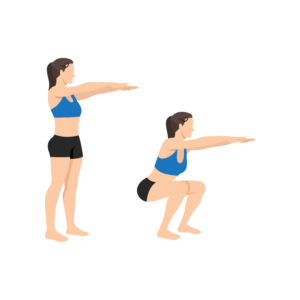
Beginner level
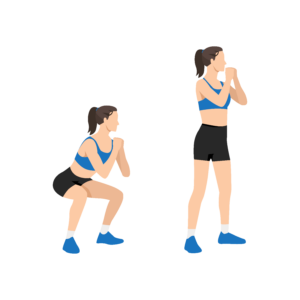
Advanced level
2. Balance
Balance is an especially important and often overlooked practice when we’re young, Bristow says. Building a good support base and keeping our mind-body connection strong can help reduce fall risk as we age.
Start by seeing if you can stand on one leg for 30 seconds. Can you do it with your eyes closed?
Work your way up to that goal by building your ankle strength. Try wall-supported calf raises, stagger steps in a straight line (start with a wide stance and work your way up to walking heel to toe) and eventually reach timed one-leg balances.
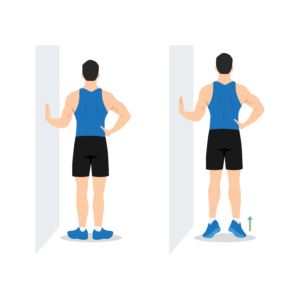
Beginner level
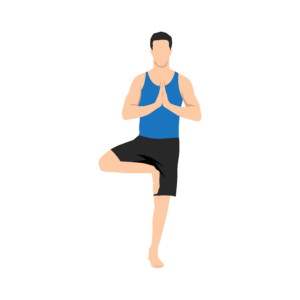
Advanced level
3. Hamstring stretch (toe-touch)
Have you ever dropped something on the ground and found yourself straining to bend over and reach it? Hamstrings are one of the biggest muscles in the body and play a major role in flexibility. Tight hamstrings are often a source of back pain, too.
Begin by adding a basic toe-touch into your stretching routine. Let your upper body hang loose as you reach toward the floor. As your flexibility advances, try for a deeper stretch by propping one leg up on a chair or flat surface, as pictured here.
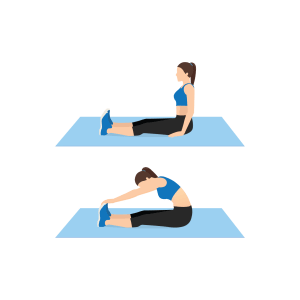
Beginner level
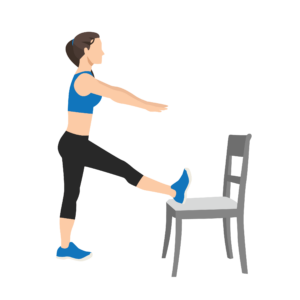
Advanced level
4. Plank
A strong core can help with posture, reduce back pain, support good balance and help postpartum recovery. It can also improve performance while swimming, rowing or swinging a golf club.
Planks are a great way to build deep core strength. Start with holding for short periods of time against a chair or table, and slowly work your angle toward the ground. From there, try planks with knees on the floor, then lift your knees and alternate between fully extended arms or forearm planks for 60 seconds. Keep your back straight and core engaged.
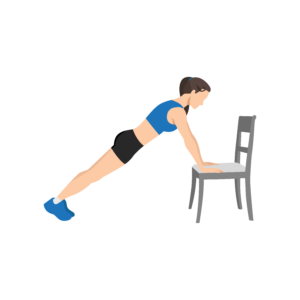
Beginner level
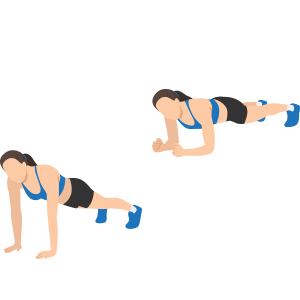
Advanced level
5. Bent-over row
With so much time spend hunched over our desks and phones, Bristow says it’s especially important to add movements focused on opening the chest (pulling versus pushing).
A bent-over row is a simple and effective movement and is great for all levels whether you choose no weight, light weights such as bottles of water, or dumbbells.
Remember to keep you back flat, core engaged and shoulder blades squeezed together at the top of each movement.
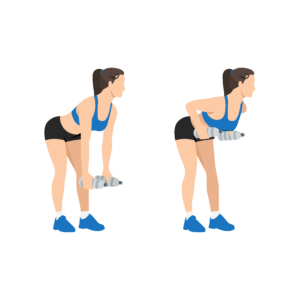
Beginner level
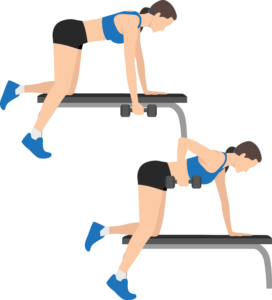
Advanced level
What's next
- Consult an orthopedic and sports medicine provider before beginning your fitness journey
- Don’t fall for these common health and wellness trends
- Could our medical weight loss program be right for your goals?




